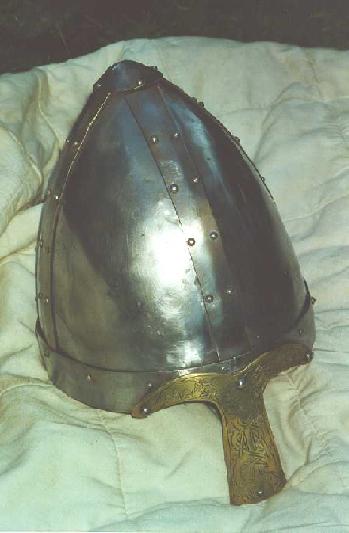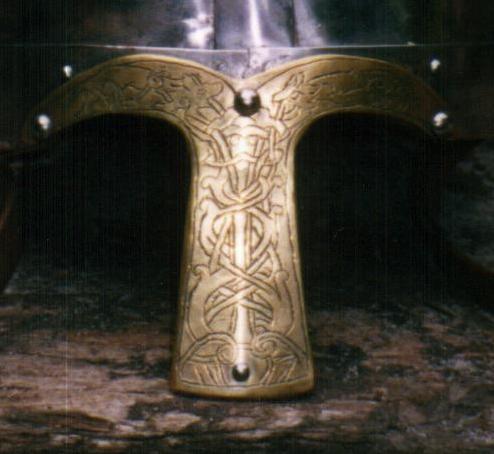Have you ever made something that you knew could never be improved upon? This is what happened with the first helmet I ever made. The shape was just right, and I never managed to duplicate it to my satisfaction.
When the time came for me to make a helmet to wear to the 2000 AD re-enactment of the Battle of Hastings, on the battlefield itself, I knew I had to use this helmet.
But I'd made it when I knew almost nothing about mediaeval helmet construction. The framework was made (badly) from 3mm (1/8") thick steel strip, about 18mm (3/4") wide. and the nasal was crap. I had since learnt a lot; not least that helmet frames were made from metal which, at the most seemed to be 2mm thick, and usually 1.6mm (16ga).
So, what to do? I pulled the helmet to bits, copied the framework in 1.6mm steel, with a ridge in the centre, made a nice new nasal, and trashed the original framework. The helmet had many years of wear, and there were a few dents in the plates I couln't get rid of, but when I'd finished, the helmet was like a phoenix - reborn, but better and brighter.
I engraved the nasal by hand, with a design in the mid-11th century Ringericke style fashionable in England a little before Hastings (and which I personally really liked). It has wolves on the eyebrows, a face made of interlace at the top of the nasal, and the rest is a complex interlace based on actual Ringericke finds in England and Scandinavia. |


